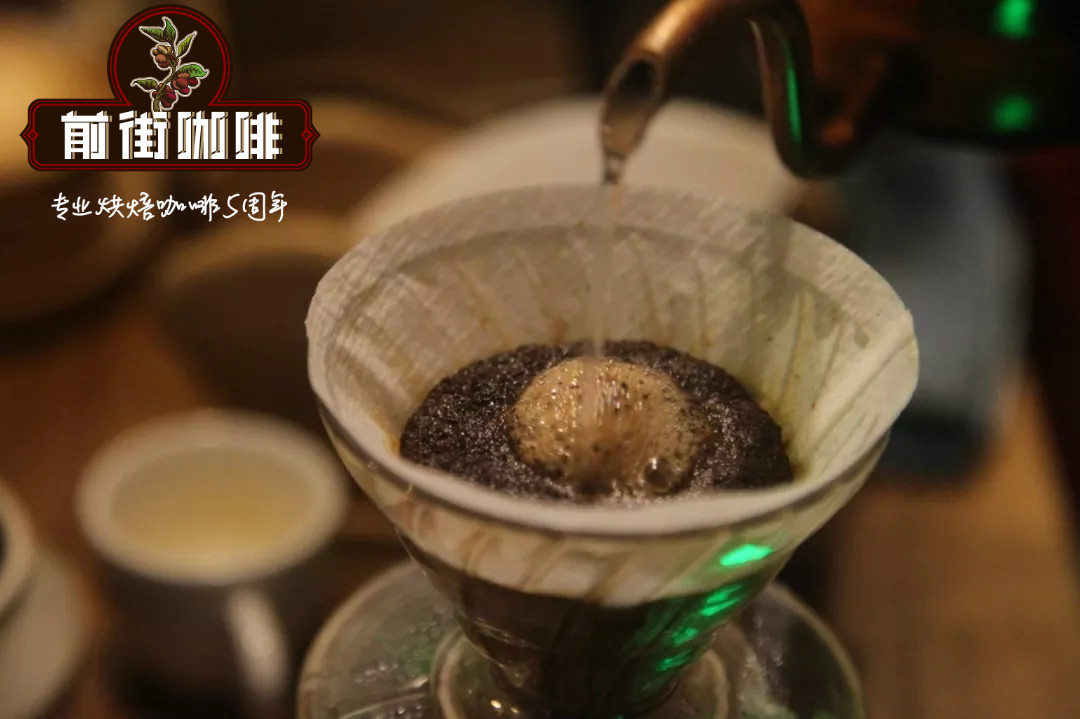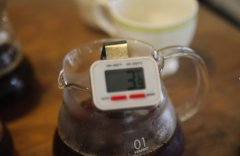What is very shallow baking? Does very shallow roasted coffee have to be sour? How to bake coffee in very shallow water

Professional coffee knowledge exchange more coffee bean information please follow the coffee workshop (Wechat official account cafe_style)
The well-known roasting degree of coffee is the American term shallow roasting, medium roasting, deep (heavy) roasting, which can be subdivided into 8 stages, and the difference of roasting degree varies with different regions. The following briefly introduces the roasting degree and flavor:
(1) Light Roast: very shallow baking, also known as "shallow baking"
Time to drop beans: before and after the start of the explosion
Flavor: bean table is light cinnamon color, with a strong grass flavor, taste and aroma is not enough, generally used for experiments, rarely for tasting.
(2) Cinnamon Roast: shallow baking, also known as cinnamon baking
Time to drop beans: an explosion begins to be dense.
Flavor: the bean surface is cinnamon color, at this time the smell of grass has been removed, strong acid, slightly fragrant, often used to make American coffee.
(3) Medium Roast: medium baking, also known as "micro baking"
Time to drop beans: from the explosion to the end
Flavor: the bean surface is chestnut color, light taste, slightly sour with bitter, moderate aroma, retain the original flavor of coffee beans, often used as American coffee or mixed coffee.
(4) High Roast: moderate micro-deep baking, also known as "concentration baking"
Time to drop beans: the end of the first burst
Flavor: the bean surface is light reddish brown, the taste is refreshing and rich, the sour and bitter balance is not irritating, and it is slightly sweet, and the aroma and flavor are all good. Blue Mountain and Kilimanjaro coffee are suitable for this roasting degree and are loved by people in Japan and Central and Northern Europe.
(5) City Roast: medium-depth baking, also known as "urban baking"
The time to drop the beans: after the first burst, that is, between the first and second bursts.
Flavor: the bean surface is light brown, the taste is bright and lively, the acidity between sour and bitter balance is light, and it releases the high-quality flavor of coffee, which is the standard baking degree and the public's favorite roasting degree. Brazilian and Colombian coffee are suitable for this roasting degree and are often used in French coffee.
(6) Full City Roast: micro-depth baking, namely deep baking, also known as "deep city baking"
Time to drop the beans: the second burst
Flavor: the bean surface is brown, the taste is calm and full, the bitter taste is strong, the aftertaste is sweet, the aroma is full, it is a Central and South American baking method, and more iced coffee and black coffee are used.
(7) French Roast: very deep baking, also known as "French baking"
Time to drop beans: the second explosion is dense to the end of the second explosion.
Flavor: the bean surface is dark brown with black, strong taste, bitter taste, light sour taste and almost no feeling, with rich chocolate and smoky aroma, which is the most popular in Europe, making coffee Oulei and Viennese coffee.
(8) Italian Roast: extremely deep baking, also known as "semantic baking"
Time to drop the bean: the second explosion ends until the bean surface turns black and produces oil.
Flavor: the bean surface is black and glossy. Before carbonation, the coffee bean fiber has a strong, complex, bitter taste, with a strong fried and scorched aroma. It is mainly popular in Latin countries and Italy. It is often used as Italian coffee Espresso.
In terms of baking degree.
Baked shallowly. Less weightlessness. The relative retention has more ingredients.
The baking is deep. There is more weightlessness. Some of the ingredients have evaporated.
Coffee beans with the same physical performance.
Deep-roasted coffee beans may be only ten grams. The light baked may reach sixteen grams.
The relative amount of ingredients that can be released is much worse, even compared to the same ten grams of coffee beans. On one side are deep-baked beans with many volatile ingredients.
On the other side are shallow baked beans with many ingredients not yet volatile.. The proportion of ingredients is also different. Then it will lead to the following conditions. Use the proportion of medium and deep-roasted coffee to extract light roasted coffee beans. So I got a glass of concentrated juice. Just like the concentrated orange juice commonly used in the catering industry. The proportion is not properly adjusted like that. It's sour to death. And then I was talking about. Lightly roasted coffee is very sour.
In addition. Grinding scale is also one of the factors to be tested. Shallow baking because the quality is heavier. It is easier to sink. If you don't grind it thicker.. Let the water easily pass through the coffee powder filter layer. It's easy to extract the acid in the first half. The second half is blocked because the lower filter layer is blocked.
END
Important Notice :
前街咖啡 FrontStreet Coffee has moved to new addredd:
FrontStreet Coffee Address: 315,Donghua East Road,GuangZhou
Tel:020 38364473
- Prev

What is the processing method of lactic acid fermented coffee? Is lactic acid fermentation the same as carbon dioxide treatment?
Professional coffee knowledge exchange more coffee bean information Please pay attention to the coffee workshop (Wechat official account cafe_style) the three giants of early treatment are solarization, washing, and honey treatment, while the process of post-processing has an extremely important impact on the flavor of coffee. From picking the fruit to removing the peel and pectin, the pectin layer is the most difficult to deal with because it is strongly attached to the coffee bean.
- Next

[notes of baristas in front street] Japanese ice hands flush "ice cubes": how appropriate is the proportion of "hot water"?
It was said yesterday that [hot hand flushing + Japanese ice hand flushing]. According to yesterday's experimental comparison, the ratio of powder to hot water is 1: 10, 1: 13 and 1: 15, respectively; the ratio of total powder to water after adding 100 grams of ice is 1: 15, 1: 18, 1: 20, and the flavor of hot coffee liquid will be lighter after being diluted by ice, even because the amount of ice is not enough.
Related
- What is the meaning of lactic acid fermentation with coffee bean treatment?
- How to judge the state of foam by sound?
- How does the latte pull out the unicorn pattern? Come to get for a little trick to improve the flower pull!
- Will flower pulling affect the taste of the latte?
- Do you know the history of coffee?
- The difference between honey treatment and sun washing what is raisin honey treatment?
- What kind of milk can a novice use to make coffee foam to keep the foam longer? The correct method and skills of milking tutorial sharing
- Why do washed coffee beans taste sour? Flavor characteristics of washed Coffee
- Introduction to the skill of how to practice the size and height of water injection around the circle of hand-brewed coffee
- How do beginners practice coffee flower drawing from scratch?

